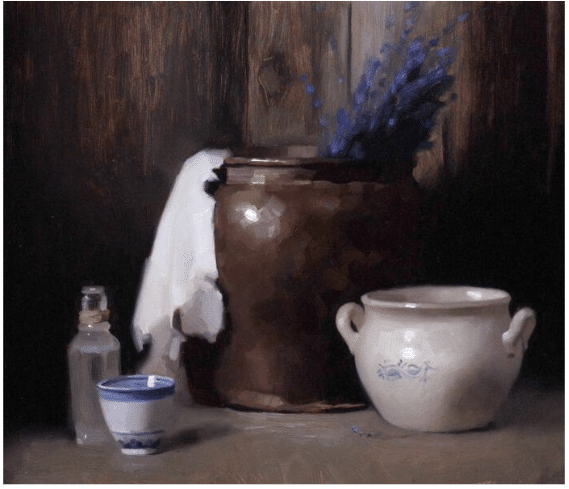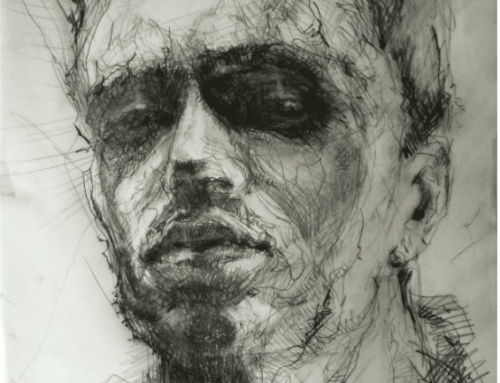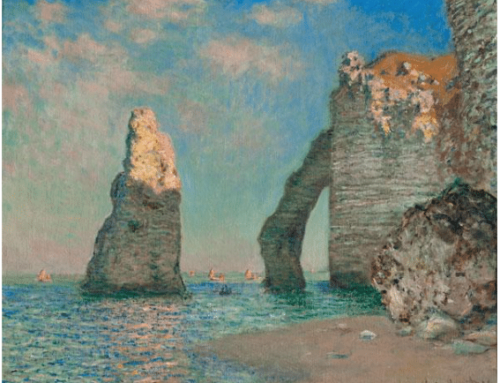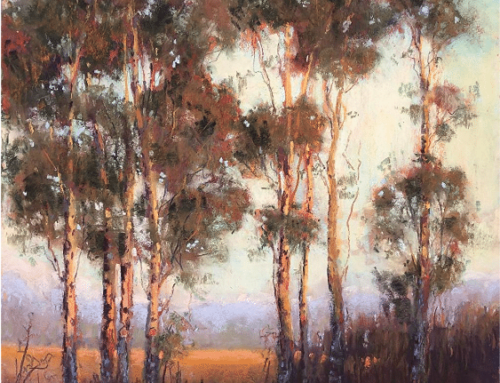An alla prima painting is one that was painted in one session. In this step-by-step demonstration, learn how Cornelia Hernes creates a beautiful still life that includes a copper pot with lavender, a glass jar, and a porcelain jar and cup.
The arrangement of the physical objects is 75% of this painting. Before starting this painting, the artist envisioned how these colors, textures, and contrasting lights and darks would work together on canvas. Composition is far more important than most beginning painters realize. It’s the live-or-die moment for any painting, and a lot of it happens before you even pick up the brush!
- Initial sketch and block-in: First she sketches a few key angles and simplified shapes which she relates to each other. Because the objects are overlapping each other, Cornelia needs to emphasize or invent places for the eye to rest. It’s the main reason she includes this particular copper pot and these porcelain vessels – contrast. Points of contrast between light and dark attract the eye and allow it to dwell on shapes and relationships instead of sliding right on past them.
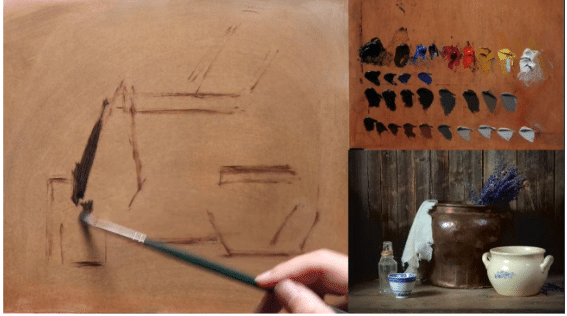
***
- She continues with the initial block-in, massing in the shadows with dashed-in darks while squinting her eyes.
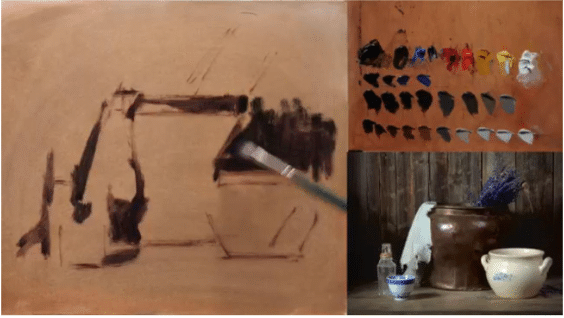
***
- In the image below, she begins introducing color as a reference point to make sure the color and value of the lavender take a starring role in the final work (in this step she is also adding color to create the porcelain jar). She then continues building in the background and foreground using a “whisper of white” to build shape.
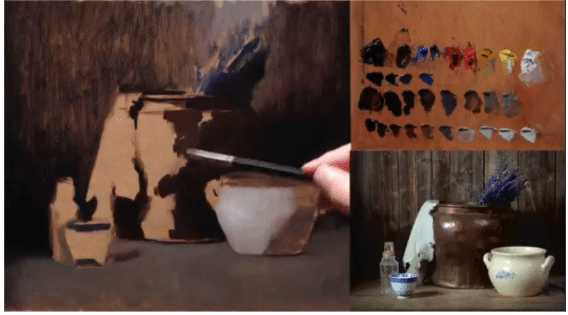
***
- Work in “zones” of the painting. “It’s very challenging to be everywhere in the painting at the same time – it’s impossible,” she says, adding that you can look at your still life painting as though it’s a journey. She says to allow one area of your painting to lead the way and allow other elements to follow suit until they lead the way, and so on.
This stage also includes tending to edges, using shadows to show the still life object contours, defining forms, and being sensitive to the value variations and light sources. In the picture below, you can see the copper beginning to look like metal – how’s this done? It’s all about a few very important values and colors, mostly as defined by the highlights.
Highlights and edges are KEY. Take that highlight away, and the rest of it looks more like a muddy mass than a copper pot. (Note the dramatic transformation with very little change when you compare the image immediately below to the next one after that.)
Note: When you’re working with a symmetrical object such as a porcelain jar in your still life composition, make sure the angles are on the same horizontal line.
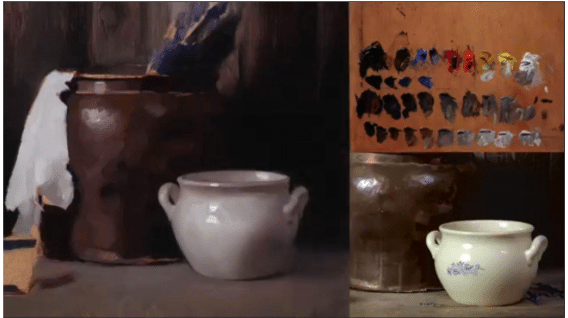
***
- Since the scale of the objects is small, she uses small brushes when painting the individual objects, and uses large brushes for areas such as the background.
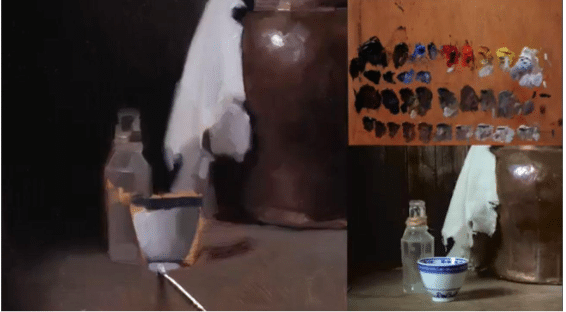
***
- Here we see Cornelia using a small brush to add highlights to the glass bottle of the composition, but she says you can also use something like a palette knife, depending on the highlights you’re adding.
When adding details, she says it can be better to omit them rather than include too many – you don’t want them to “argue” with the focal point of your still life composition.
- As she puts the final touches on the alla prima still life, she says, “Step back, squint, and also have your eyes wide open – travel back and forth between different modes of observation.”
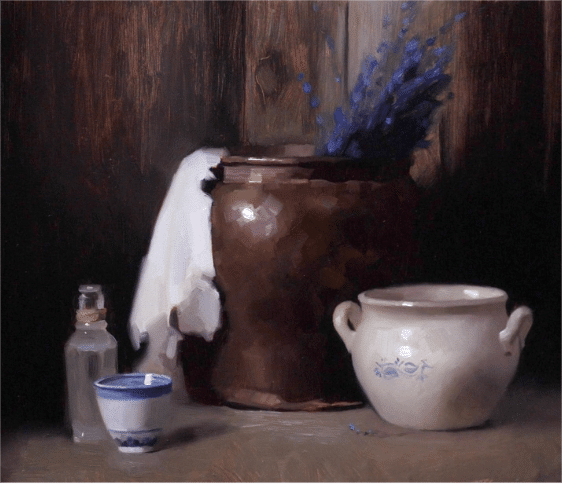
The final alla prima still life painting by Cornelia Hernes
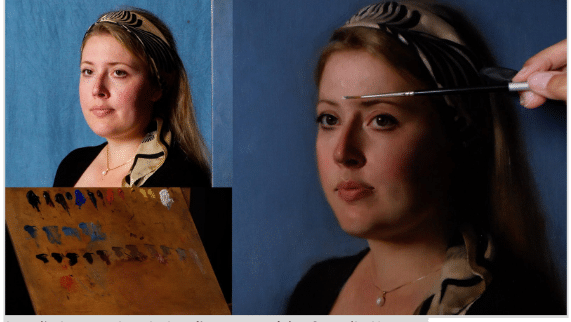
The final alla prima still life painting by Cornelia HernesA realistic portrait painting (in progress) by Cornelia Hernes
Become a Realism Today Ambassador for the chance to see your work featured in the Realism Today and Inside Art newsletters, on our social media, and on our websites.

